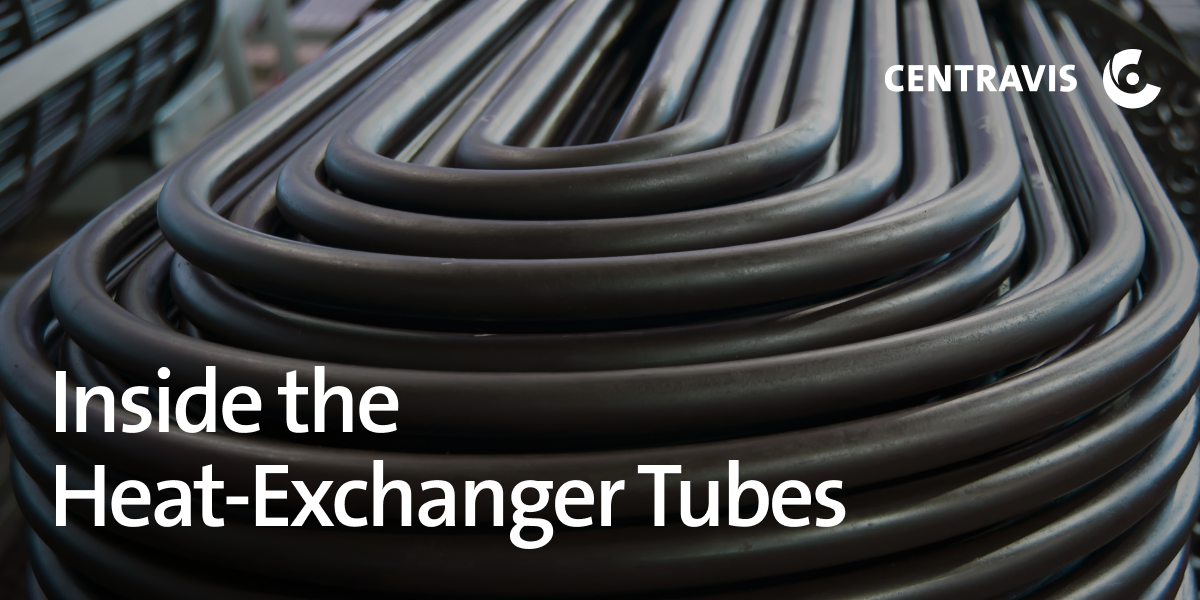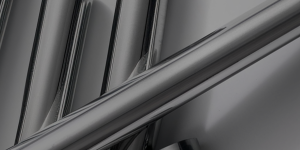
Heat-exchanger tubes are central to temperature regulation in a wide range of industrial and commercial systems. From power plants and chemical refineries to HVAC and refrigeration units, these tubes must maintain consistent performance under high temperatures, pressures, and corrosive conditions. This article takes a closer look at the engineering principles behind Centravis heat-exchanger tubes, highlighting the design features and material choices that make them dependable solutions for critical applications.
Key Engineering Requirements
1. Resistance to High Temperatures and Pressures
Heat-exchanger tubes often operate in environments where temperatures and pressures can push materials to their limits. A well-designed tube must balance mechanical strength and thermal stability, ensuring that expansion, contraction, and stress do not lead to degradation or failure over time.
2. Corrosion Resistance
In many processes—especially those involving harsh chemicals or saltwater cooling—a tube’s ability to resist corrosion is vital. Corrosion can weaken the material, reduce heat-transfer efficiency, and ultimately compromise the entire system. Stainless steel and Duplex alloys are widely used for their excellent resistance to pitting, crevice corrosion, and stress corrosion cracking.
3. Efficient Heat Transfer
A fundamental purpose of heat-exchanger tubes is to move thermal energy efficiently between mediums (e.g., gas, liquid, or steam). Material conductivity, wall thickness, and surface finish all play significant roles in ensuring optimal heat transfer. While some applications prioritize minimal heat loss, others require targeted conduction or rapid cooling.
Centravis Approach to Heat-Exchanger Tube Design
Centravis specializes in seamless stainless steel tubes, offering robust solutions that meet or exceed industry standards. A few core elements define the company’s approach:
1. Material Selection
- Austenitic Stainless Steels (e.g., 304/304L, 316/316L): Balancing good corrosion resistance, weldability, and cost-effectiveness for many standard applications.
- Duplex and Super Duplex Steels: Providing higher mechanical strength and increased resistance to chloride-induced corrosion. Ideal for more challenging environments.
- Nickel Alloys: Suited for extreme conditions where exceptional heat and corrosion resistance are demanded.
In addition to these classic grades, Centravis leverages its engineering expertise in close collaboration with clients to develop or select optimal materials tailored to specific requirements. One such example is the Balev 316L solution from Balev Steel, which offers an adaptive set of mechanical and corrosion-resistant properties. This specialized grade enhances the overall lifespan of heat-exchanger components and meets key performance criteria in HEX applications.
2. Precision Extrusion and Finishing
Centravis employs advanced extrusion processes to ensure uniform wall thickness and consistent internal diameters across the entire tube length. This precision is critical for uniform heat transfer and reliable mechanical performance under variable loading conditions. Specialized finishing steps, including pickling, polishing, or passivation, can further enhance corrosion resistance.
3. Quality Assurance and Testing
Regular non-destructive evaluations (NDE), such as eddy current and ultrasonic testing, help verify the absence of internal flaws. Rigorous hydrostatic and pressure tests confirm a tube’s ability to withstand operational pressures. This thorough quality control ensures each heat-exchanger tube meets stringent mechanical, chemical, and dimensional requirements.
Applications Across Multiple Sectors
Power Generation
Whether in conventional coal-fired plants, combined-cycle gas units, or nuclear power facilities, heat-exchanger tubes facilitate the transfer of energy to produce steam, drive turbines, and condense exhaust. Here, reliable tube materials with high-temperature endurance and corrosion resistance are essential to maintain optimal thermal efficiency and system uptime.
Oil & Gas and Petrochemical
Refineries and petrochemical plants deal with aggressive, high-temperature processes. Duplex and Super Duplex stainless steels often excel in these environments due to their superior corrosion resistance and strength-to-weight ratio.
HVAC and Refrigeration
Commercial HVAC systems and large-scale refrigeration units rely on consistent heat exchange for comfort cooling and industrial chilling. Tubes that offer a balance of cost efficiency, corrosion resistance, and good thermal conductivity help maintain stable system operation and reduce long-term maintenance costs.
Food & Beverage
Sanitary processes in food and beverage production also demand high-quality tubing. Austenitic stainless steels are particularly popular here due to their cleanability, hygienic properties, and corrosion resistance, ensuring products meet health and safety regulations.
Driving Efficiency and Reliability
Centravis heat-exchanger tubes are engineered to handle the harshest operational requirements found in industrial and commercial systems. Whether dealing with extreme temperatures, corrosive media, or stringent quality regulations, these tubes are designed to optimize heat transfer, extend service life, and reduce unplanned downtime. By combining specialized material grades, precise manufacturing, and robust quality assurance, Centravis helps industrial operators and equipment manufacturers achieve safer and more efficient thermal processes.
Conclusion
Heat-exchanger tubes play a critical role in keeping industrial and commercial systems running at peak performance. Through thoughtful material selection, meticulous manufacturing processes, and rigorous testing, Centravis delivers solutions that withstand demanding conditions while ensuring minimal heat loss and extended service life. As industries continue to seek greater efficiency and sustainable solutions, the importance of reliable, high-performance heat-exchanger tubes becomes increasingly clear—driving innovation and fueling the future of temperature regulation across the globe.



